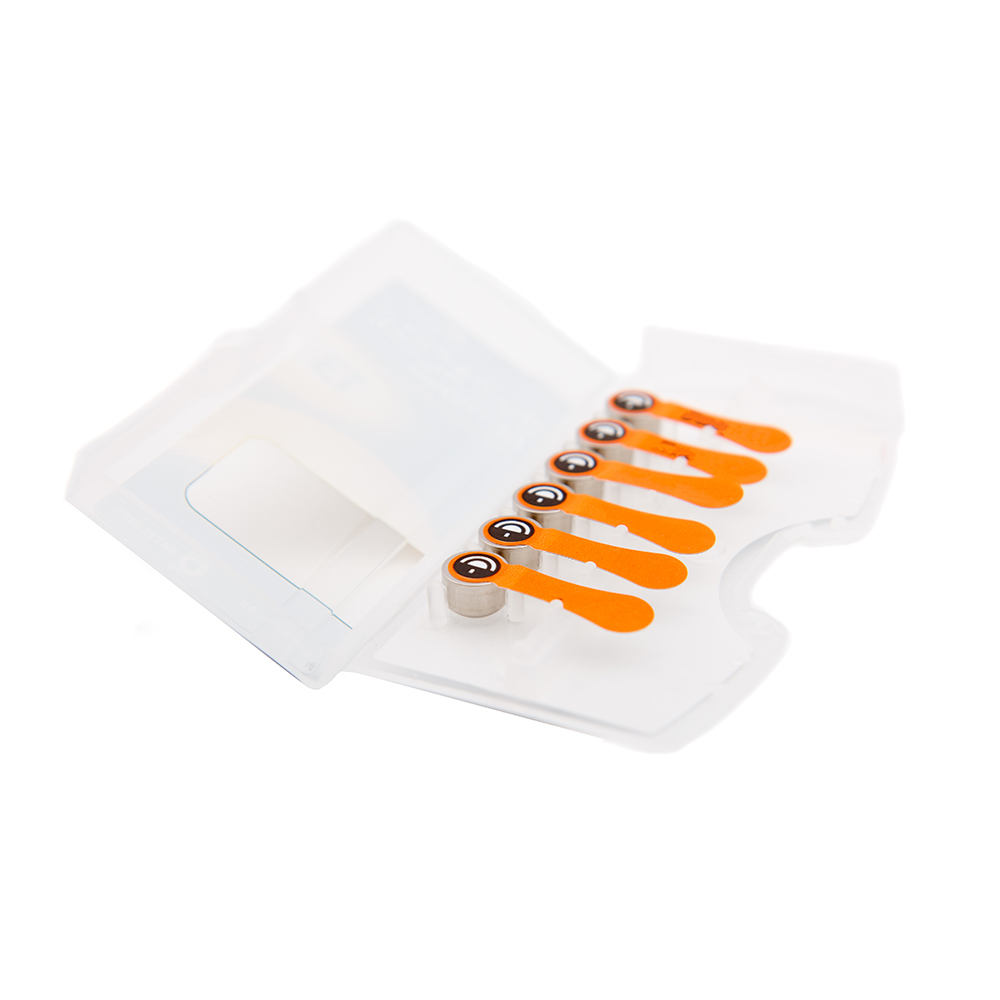Hearing Aid Batteries
Without power, hearing aids wouldn’t do their job and help you hear at your best! Here's everything you need to know about batteries, focusing on the two main types: disposable and rechargeable batteries. To learn more about our hearing device batteries visit us in Seattle, WA.
Disposable zinc-air hearing aid batteries
Most disposable batteries have two different chemicals (usually zinc and manganese dioxide) on the positive and negative sides, separated by an alkaline electrolyte. Batteries use air as one of the chemicals to fill the battery with the other chemical (zinc). On the positive side of the zinc-air battery, there are small openings for air to enter. A tab covers those holes, preventing air from entering before you're ready to use it.
Since the battery starts to discharge as soon as you let air in, it's best to use the battery regularly after you've disabled the tab. Temperature and humidity can affect battery efficiency.

It's more challenging to predict how long the batteries can last with more advanced hearing aid technology because some of the processing that the hearing aid does in different conditions uses more power than if you're sitting in a quiet spot, for example. As a result, using the phone in a noisy environment can deplete the battery faster than using it in a quiet environment.
Additionally, if you use Bluetooth to stream content to your hearing aids, it will significantly reduce the battery life.
Different sizes of batteries are used in different types of hearing aids. When the battery life on certain hearing aids runs out, they make a chirping sound. If you use disposables, you should keep a stock of hearing aid batteries on hand at all times.
It's not difficult to find the correct hearing aid battery. A color and a numeric code are assigned to each battery. The following are the four most popular hearing aid battery sizes:
- Small hearing aids, such as IIC and CIC systems, use yellow (#10) batteries. This battery, on the other hand, has a shorter life of around 80 hours.
- In-the-canal hearing aids (ITC) or in-canal (CIC) use brown (#312) batteries. They have a 175-hour battery life.
- For behind-the-ear (BTE) and in-the-ear (ITE) instruments, use the orange (#13). They have a 240-hour lifespan.
- The blue (#675) battery is the largest and has the longest lifespan. Larger hearing aids require this size of the battery. Blue batteries have a 300-hour lifespan.
Rechargeable hearing aids
Even though hearing aid rechargeable batteries have been on the market for quite some time, some recent developments have improved planned battery life, most notably the arrival of lithium-ion batteries. This is the same battery used in desktop computers, mobile phones, laptops, and even Teslas!
Hearing aids with rechargeable batteries are usually only available in behind-the-ear versions. Although most manufacturers now use lithium-ion batteries because of their advanced technical features, there are also silver-zinc rechargeable batteries that allow you to swap them out and use disposable batteries.
Why are rechargeable hearing aids becoming more popular?
- Simple to use: There's no need to fiddle with tiny batteries that need to be replaced regularly.
- Efficient: Stays charged for 24 to 30 hours; a single rechargeable battery lasts around five years; lithium-ion batteries last around 100 disposable batteries (once a year replacement required for silver-zinc batteries). Convenient: Rechargeable batteries can save consumers up to 120 battery replacements per year.
- Simple to charge: The charger is easy to use and takes about five hours to charge.
- Lower long-term cost: There's no need to keep replacing your batteries.
Hearing aid battery troubleshooting
The following could be contributing factors if your batteries aren't lasting as long as you expect them to:
Have you recently changed your prescription or settings? It's possible that your hearing aid needs a higher prescription.
Is your noise environment different now? Have you recently been to a concert or taken a vacation on a noisy plane? A noisy place can overwork the hearing aid and use up power more quickly.
Has it been particularly cold or hot recently? If it has been humid, the battery can absorb moisture, reducing battery life. Since the battery loses some of the moisture it requires to work correctly, this can impact efficiency.
Do you have a question about hearing aid batteries, don't hesitate to connect with us today!
